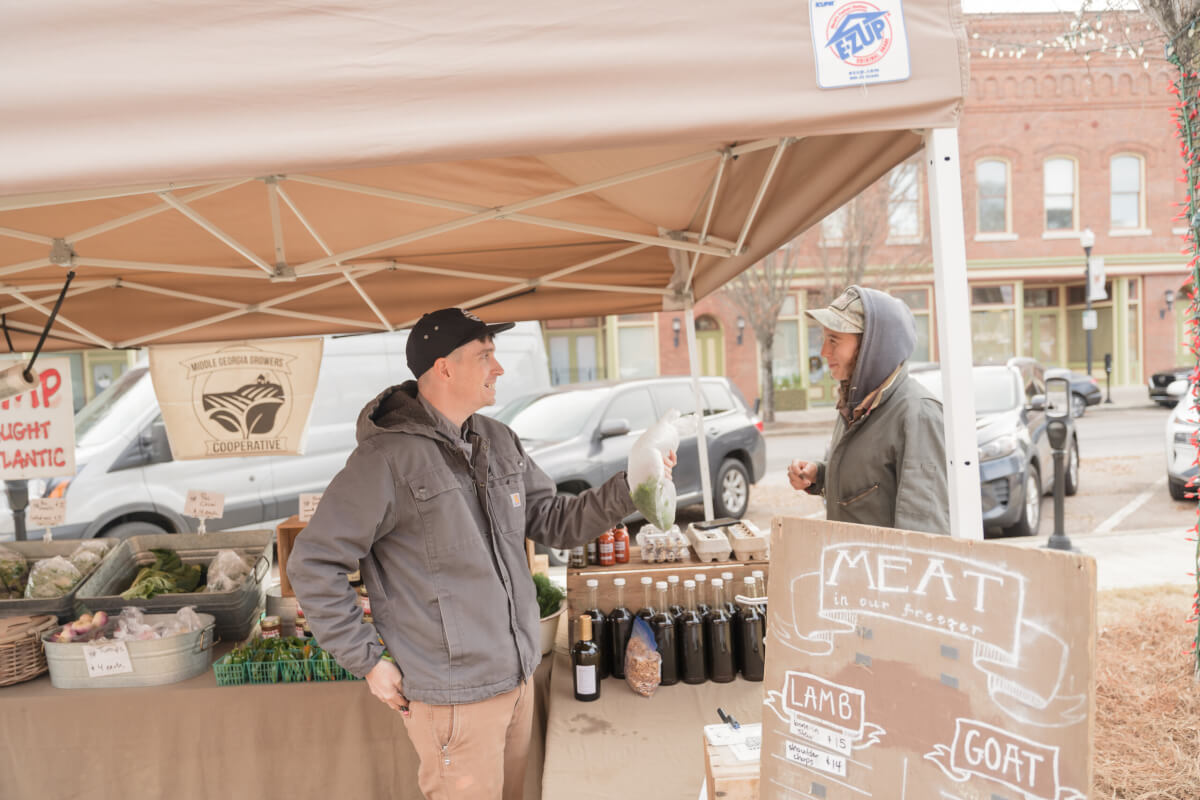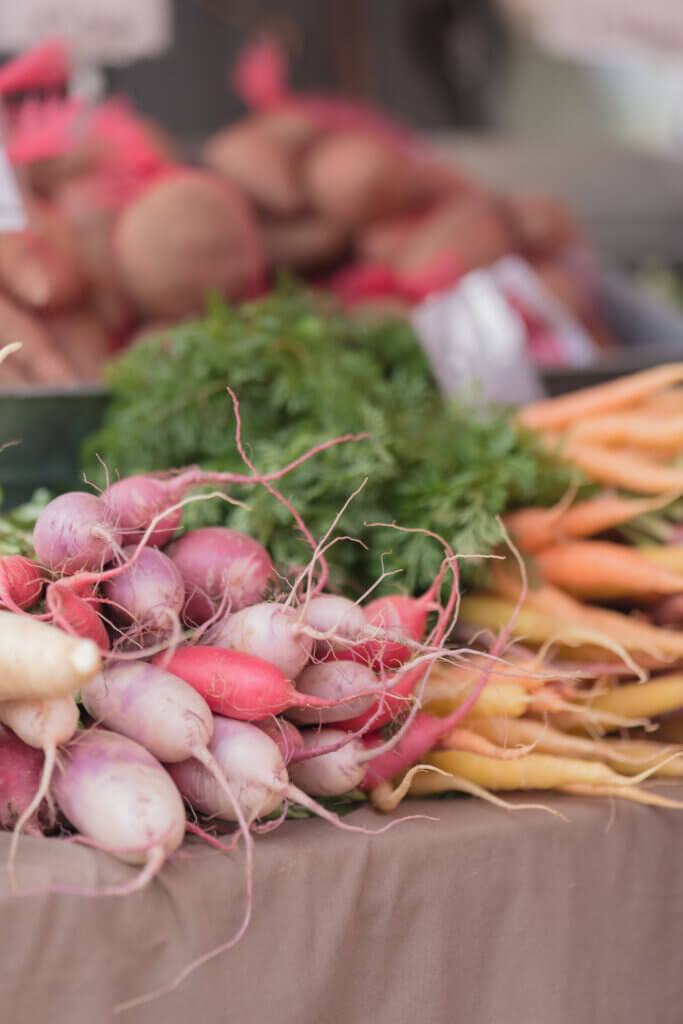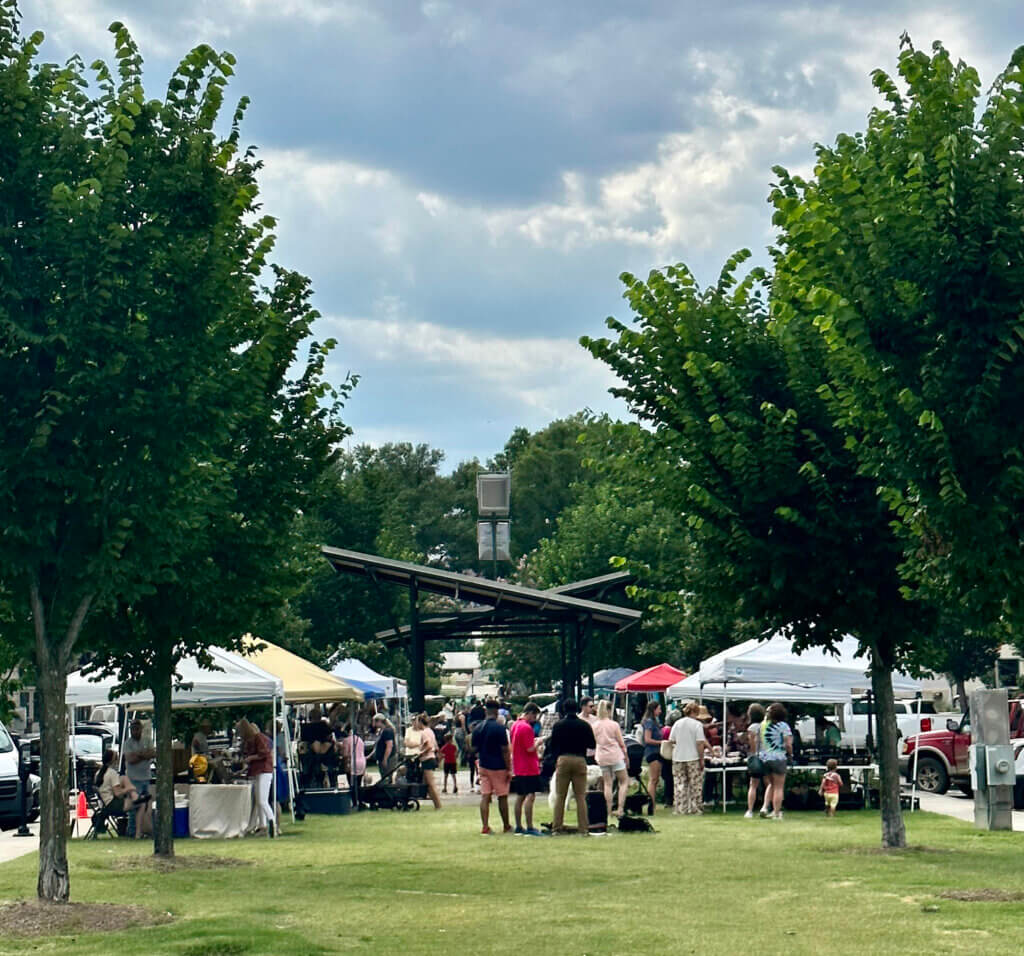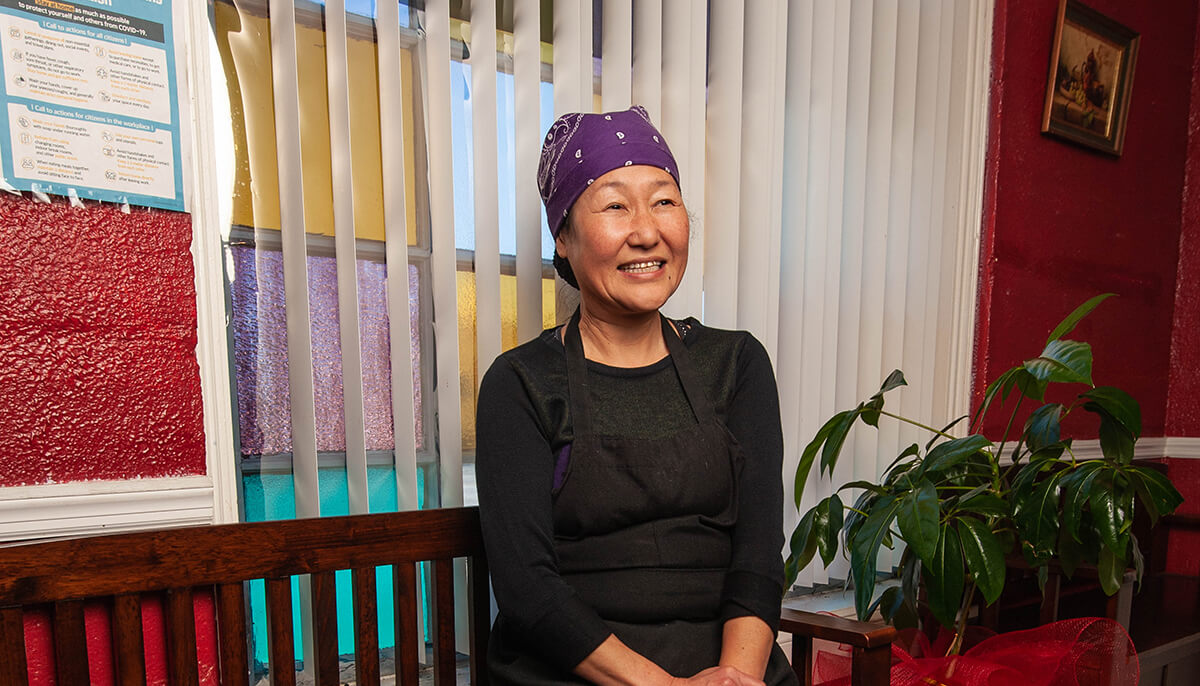
10 tips for eating and sourcing locally
By Sierra Stark Stevens and Laura Collins | Photos by Mike Young
Does eating locally and seasonally sound complicated to you? Let the Poplar Street Farmers Market (PSFM) vendors be your guide. Not only do they deliver local, seasonal goodies every week in Downtown Macon on Poplar Street between 3 and 6 p.m., but they’re also full of insights about making Central Georgia-grown a part of your everyday life. From creative recipes and affordability tips to a diverse array of offerings, living la vida local might be even more enjoyable than you think.
1 Ask Questions
If you’re not sure where to start, “go to the market and talk with the farmers who grow the food,” said Julia Asherman of Rag and Frass Farm. “We can tell you how to prepare produce that is unfamiliar, share recipes, and even explain how to store produce properly.
2 Enjoy the anticipation
As you find the foods you want to wait for, you may discover new favorites along the way. Lena White of Middle Georgia Growers Cooperative said, “Instead of all the same recipes all year, we begin to fully embrace crops like eggplant, turnips, or pumpkins, celebrate our favorites such as tomatoes, and realize absence makes the heart grow fonder and more creative. Edna Lewis is a favorite inspiration.”

Carrots and radishes grown at Rag & Frass Farm.
3 Keep it practical
“Incorporating local produce into your routine doesn’t have to be dogmatic or limiting; it should be fun, delicious, practical and liberating,” Asherman said. Food choices are “personal decisions impacted by many factors including time, money, culture, and kids; it doesn’t have to be all or nothing.”
4 All budgets are welcome
“Food access is a concern in our community and around the country,” Asherman shared. PSFM “is one of many Georgia markets able to accept EBT and ‘double’ it for fresh produce. This means a customer can buy the basics such as meat, eggs, or bread, and match the value in produce,” said White. “Even a five-dollar weekly commitment supports the local food system.”
If you’re interested in local food, but don’t have anything to spend, “there are many ways to support without reaching into your pockets. Spread the word or lend a helping hand. A farmer may need help on their farm or a cashier at markets,” said Kaneisha Miller of EM Farms.
5 Help your health – and the earth’s
If you want to add a little health kick to your diet, local produce is one great option. Katherine McLeod of First Choice Primary Care, PSFM sponsors, said, “There are countless health benefits to eating a variety of fruits and vegetables to help prevent or control chronic diseases.” Fresh, local food hasn’t been sitting in storage or treated with preservatives for long-distance transportation, which may boost its nutritional benefit, McLeod said. Multiple growers noted their products’ smaller carbon footprint, that environmental protection is a core value of their business practices, and that your dollars support that mission.
6 Go beyond fruits and vegetables
You can get basics like bread, eggs, cooking oil, and proteins, plus flavor boosters like hot sauce, jellies, and herbs. “If fresh produce is the cornerstone of any good farmer’s market, then everything else is mortar,” said White. “Culinary oils (such as Georgia olive and peanut oils), specialty meats (lamb, goat, shrimp, to name a few), and prepared goods (jam, hot sauce) tie together the kitchen and transform a fresh haul into a menu,” they explained.
7 Make it a routine
“Rearrange your grocery shopping and meal planning to start on Wednesday afternoons from what is in season and made locally first,” recommended Luke Opperman of Our Big Oak Bakery. If you live or work downtown, PSFM may be the closest place to get groceries, already saving time. Plus, “Most farmers offer pre-orders so you can simply swing by in a matter of minutes,” said the Carrs of Bone Creek Farm. “It’s okay to start small and organize recipes that include one seasonal crop,” said White.
8 Bring the kids
Kids can learn a lot about science, cooking, history, agriculture, and business from the producers. Picky eaters may even want to try a new vegetable if it’s part of the adventure of learning and making friends. Many vendors are parents or grandparents with kid-friendly food tips. “Going to the market gives kids a chance to learn about farming and find out where food comes from. Even grownups will see and taste produce that they have never seen before,” said Bobby Slaten, The Peanut Man.
9 Enjoy the community
PSFM is a gathering place. Buyers and growers from all over the local area can be found there. McLeod suggested that being “outside walking around and talking to our grower friends” can bring about feelings of connectedness, supporting mental health. Asherman shared, “We care about our customers’ wellbeing. It’s not uncommon for market vendors to make special items, harvest or grow according to special requests, bring bulk deals, or deliver to sick customers.” You may even get inspired to start your own garden or small business, noted Nikki Taylor of Everyday Farm and Garden.
10 Most of all, shop at your local farmers market
The farmer’s market isn’t just an outdoor produce section. It’s a community resource, a social event, a way to vote with your dollars, connect with your neighbors, improve your nutrition, get inspired, learn about your community’s food system, protect the environment, see art, hear music, and find recipes. Bonus: the food’s delicious.
![]() Follow Poplar Street Farmers Market on Instagram.
Follow Poplar Street Farmers Market on Instagram.

A sunny day at the PSFM. Photo by MM Staff.
Jams, Jellies, Jewelry, and More
Maco Dairy Farm
Marie’s Baked Goodies and More
Middle Georgia Grower’s Cooperative
Porter’s Place
Shirley’s Baked Goods
The Peanut Maaann!
Vesterfield Farm







